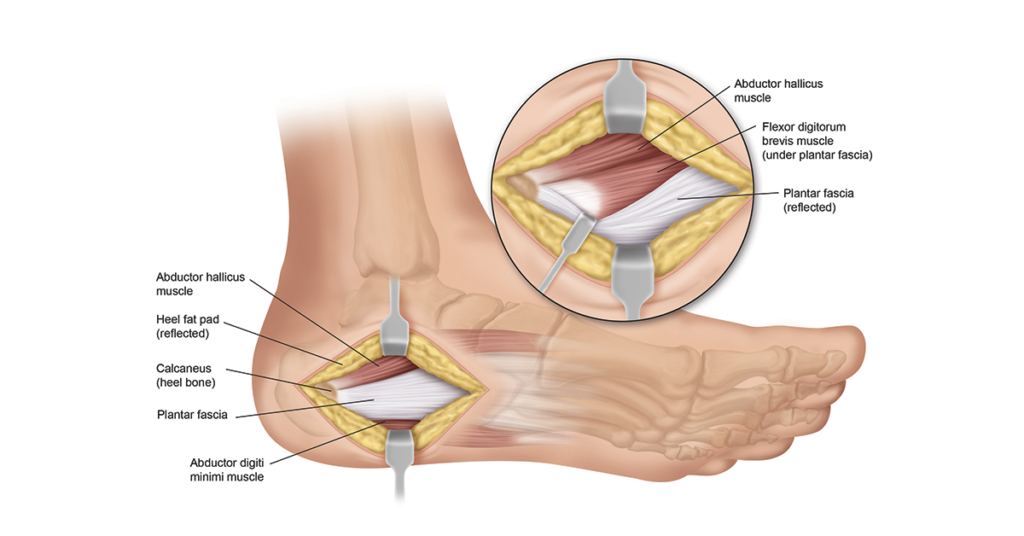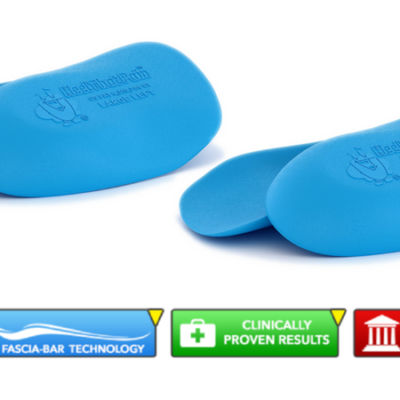Plantar Fascia Surgery
What is Plantar Fasciitis Surgery?
Plantar fascia surgery is sometimes recommended as a treatment to reverse the effects of plantar fasciitis. In most cases, plantar fasciitis can be treated non-surgically, but in chronic cases and when natural treatment options do not work, plantar fascia surgery is can provide long-term relief.
In most cases traditional plantar fascia release operations involve open surgery. In this procedure, the orthopedic surgeon cuts part of the plantar fascia ligament, thereby relieving some tension that may have accumulated. To do this, the surgeon will begin by making an incision around the heel pad. An incision is then made on the plantar fascia ligament to relieve some of the tension. Also, if a heel spur is present, it may be removed along with any damaged tissue. Endoscopic plantar fascia surgery is the second option, and it involves locating the damaged portion of the fascia through instruments that are fed through a small incision.

Generally, only about 5% of plantar fasciitis sufferers undergo foot surgery. In most cases it is only considered after conservative treatments for plantar fasciitis have failed. Initial treatments usually consist of natural options like the use of orthotics, stretching and strengthening the heels, and icing the bottom of the feet. If these treatments are not successful, medical treatments such as cortisone injections, extracorporeal shockwave therapy, and ultrasound will often provide relief. As a last resort, plantar fascia release surgery is considered to help cure and relieve the pain caused by plantar fasciitis.
This non-surgical treatment is guaranteed to reduce heel pain!
Plantar Fascia Surgery Requirements
Before heel surgery is decided upon as a treatment option there are certain criteria that should be met. First, the condition should be serious enough to have lasted nine to twelve months while trying other non-surgical treatment. Stretches and other exercises designed to decrease symptoms of plantar fasciitis should also have been used during this period. Athletes who suffer from this condition might also consider surgery when performance becomes significantly impaired by heel pain and related ailments. Lastly, before participating in plantar fascia surgery it is crucial that you are aware of the risks involved with the surgery. Although the procedure is not generally serious, negative side effects can still occur such as scar tissue.
Plantar Fasciitis Surgery Recovery Time
The recovery time for plantar fascia release surgery is typically around 6-10 weeks to recover to the point where you can walk comfortably without assistance. It may take up to 3 months before you can resume rigorous activity and exercise.
For open surgery, you can also expect to wear a cast or brace for a few weeks to reduce weight on the heel and foot, allowing the tissues to heal. Endoscopic surgery patients often have a faster recovery, and may be able to walk normally after 3-6 weeks.
Complications of Plantar Fascia Surgery
There are several complications that can inhibit full recovery following plantar fascia surgery. As with all surgeries, there is the chance of infection, especially if the wound is not properly cleaned and cared for. There is a small possibility the arch of the heel can be reduced if the plantar fascia is released too much. Also, numbness in certain areas may occur following surgery if the nerves around the fascia become damaged. And while most surgeries are very successful in eliminating plantar fasciitis, there is still the slight chance that the surgery will not fully cure the heel pain or that the pain becomes worse.
Like with any type of surgery, plantar fascia surgery has its risks. However, the majority of patients who undergo this procedure enjoy a full recovery so it is important to decide with your orthopedic surgeon if the procedure is right for you.






